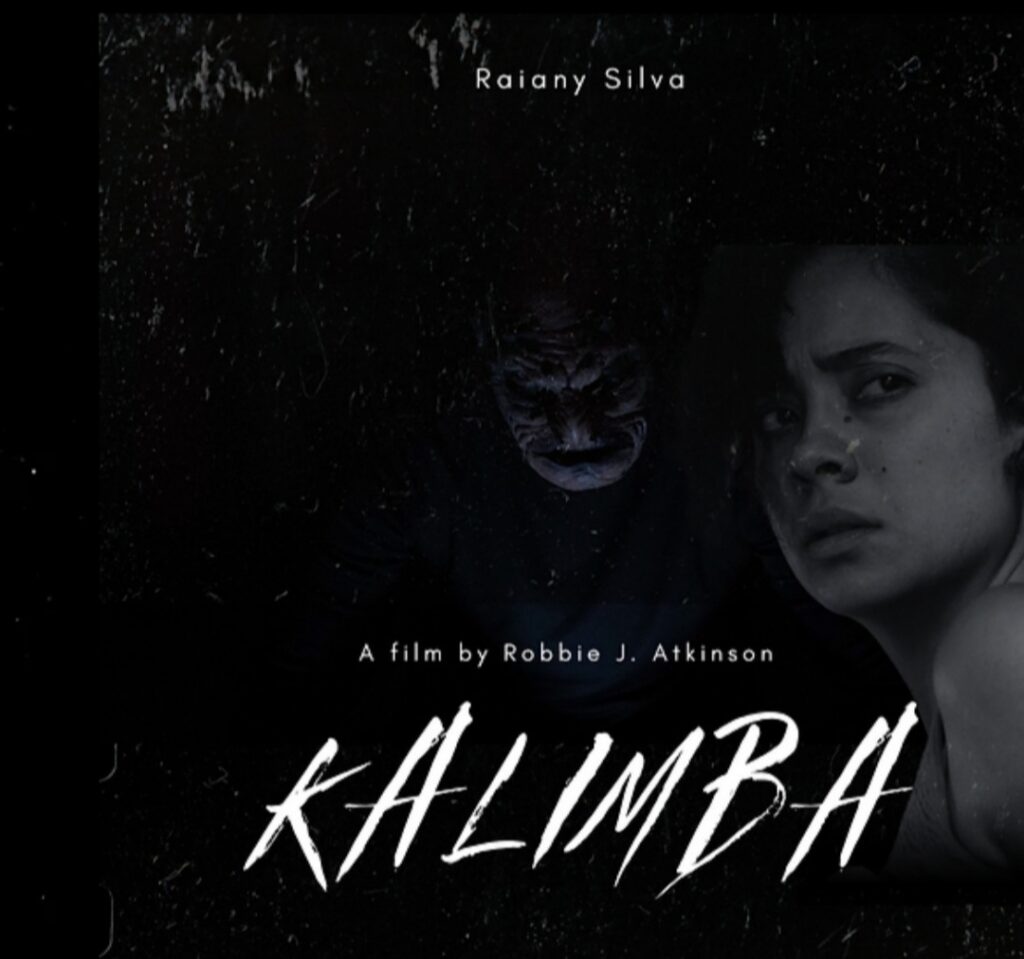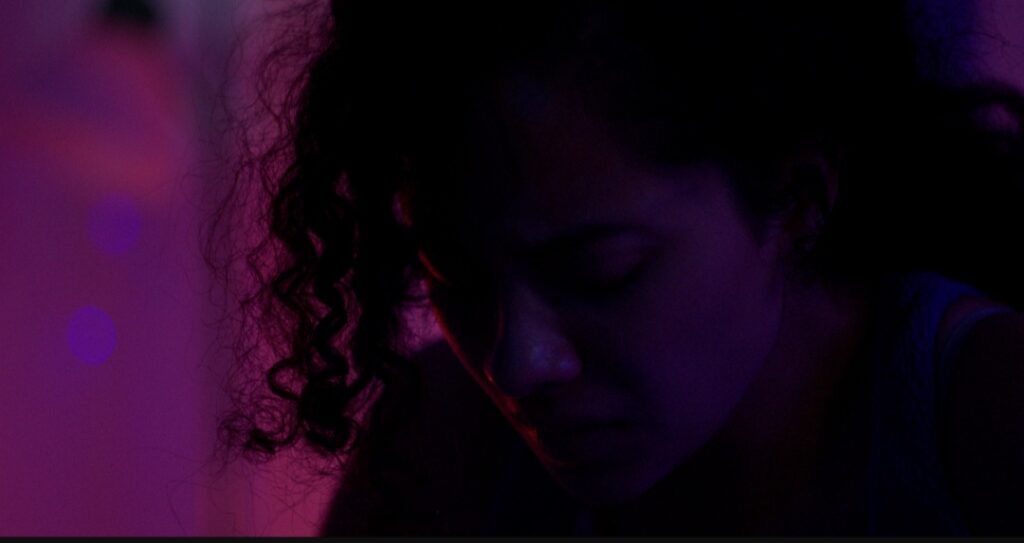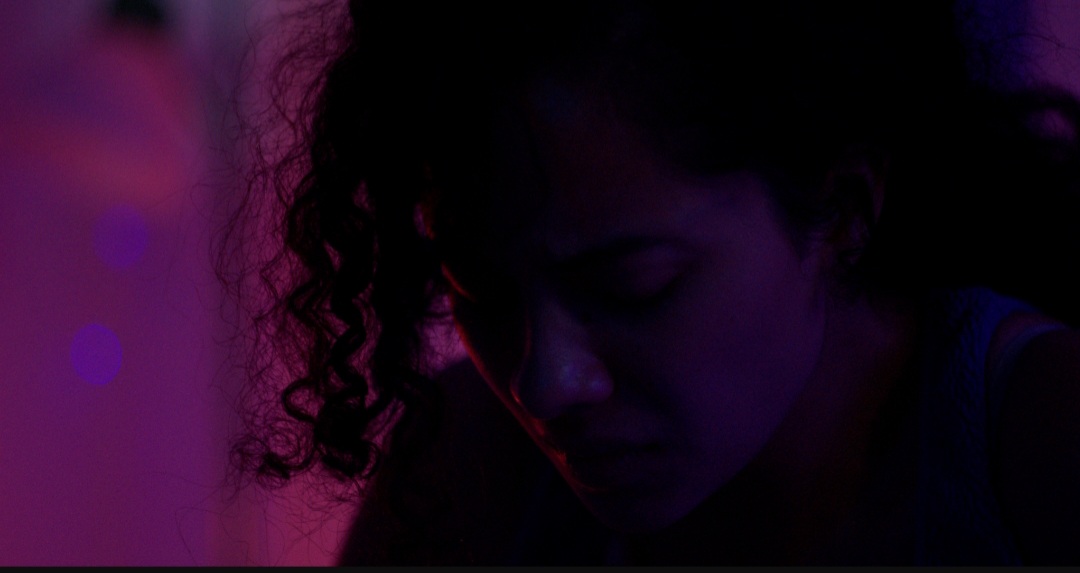When a nightmare becomes reality and reality becomes a nightmare, is it safest to sleep or wake?
Robbie Atkinson’s horror film Kalimba follows Cassidy (Raiany Silva) as she slips between sleeping and waking in an attempt to escape a demonic presence stalking her. When her disillusioned mother (Sheila Ball) fails to offer any comfort or help with Cassidy’s sleep paralysis and night terrors, she turns to her friend Esther (Joana Cruz). Together, the two try to parse what might be happening to Cassidy, eventually realizing that her nightmares started after her father brought home a kalimba, a Zimbabwean musical instrument. But Cassidy is left with more questions than answers as the demon continues to stalk her by night.
While Atkinson’s Kalimba is the proof of concept for a feature, the film struggles greatly to represent its core concept. Sleep paralysis is mentioned, but our protagonist doesn’t ever seem to enter this state, and even her opening nightmares are short-lived, cut-off by a lengthy conversation with her mother that feels too repetitive to provide any meaningful forward momentum for the story. The titular demonic object in the film, the kalimba, is loosely referenced but never shown until the final moments of the film, forcing the audience onto unsteady ground about what exactly the item is and how, if at all, it plays into Cassidy’s night terrors.
But the film is not without its strong points—primarily its successful use of hair-raising visuals to build suspense. As Atkinson says, darkness is key in this film, serving almost as a character for us to watch and probe as the story unfolds. Cinematographer Christina Somphone does well to lean on the tropes of horror to build out an eerie visual sphere; expansive darkness, lengthy and lingering shots, and empty space in frame, increase the drama and suspense as Cassidy wanders through her house alone. They ask us to wonder what might be lurking in the darkness and question the safety of Cassidy even when there is no imminent threat. More than this, the film’s visuals mesh well with diegetic sound and music to breed tension and suspense as Cassidy roams through her house in the dead of night, her steps punctuated by the sound of a heartbeat, the creaking of a floorboard, and the occasional chime of a kalimba in the distance.

However, the film begins to plateau after this chilling opening sequence ends. What follows is an interaction between Cassidy and her friend Esther that becomes representative of a much larger issue with the film as a whole: tonal inconsistency. When the film begins, we’re thrown headfirst into the nightmares of Cassidy’s sleep paralysis, and it’s hard not to be enticed. However, as the two women talk, the pacing slows and the tone shifts dramatically to a lively conversation about the nature of Cassidy’s dreams. They bounce from topic to topic, covering everything from boyfriends to the metaphysical, all to the tune of an upbeat, kitschy polka that completely alters the film’s atmosphere. Not to mention, the visual excitement of before falls flat, replaced with a flashback sequence overlaid with a flashy prismatic effect that obscures more than it illuminates what we’re seeing.
It’s important to restate that Atkinson considers this film a proof of concept for a larger feature, so there are allowances to be made for the occasional non sequitur, incomplete backstory, or imperfect tonal transition. However, with this stark musical misstep, roving dialogue, and dissatisfying character relationship, it almost feels as though the scene could be removed from the film entirely and little would be lost.
With that said, the final horror sequence following Cassidy’s conversation with Esther is a return to the thoughtful horror visuals the film opens with. We see Cassidy boxed in by dark, black borders as she showers in an empty house, accompanied by the sound of creaking floorboards. It’s one of the stronger moments in the film, once again making use of long, drawn-out shots, extensive darkness, and distinct pauses to inspire fear through anticipation.
Still, it feels like we are watching three distinct films, each with its own tone and story. Cassidy is the thread connecting them all, but without a strong grasp of what she is experiencing, she’s a tenuous connection at best. In the end, horror visuals and the use of suspense are where Kalimba succeeds, rather than dialogue or acting. But these visuals cannot stand on their own, making it hard for the audience to truly lose themselves in their fear of what’s to come.


